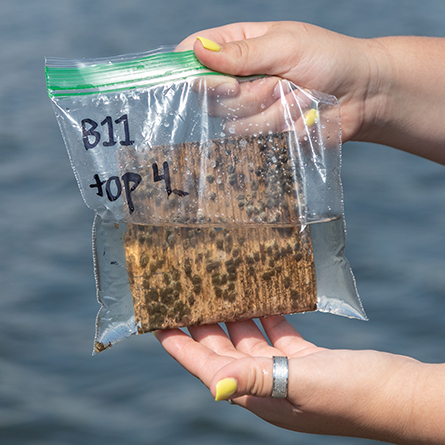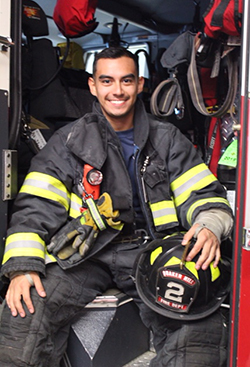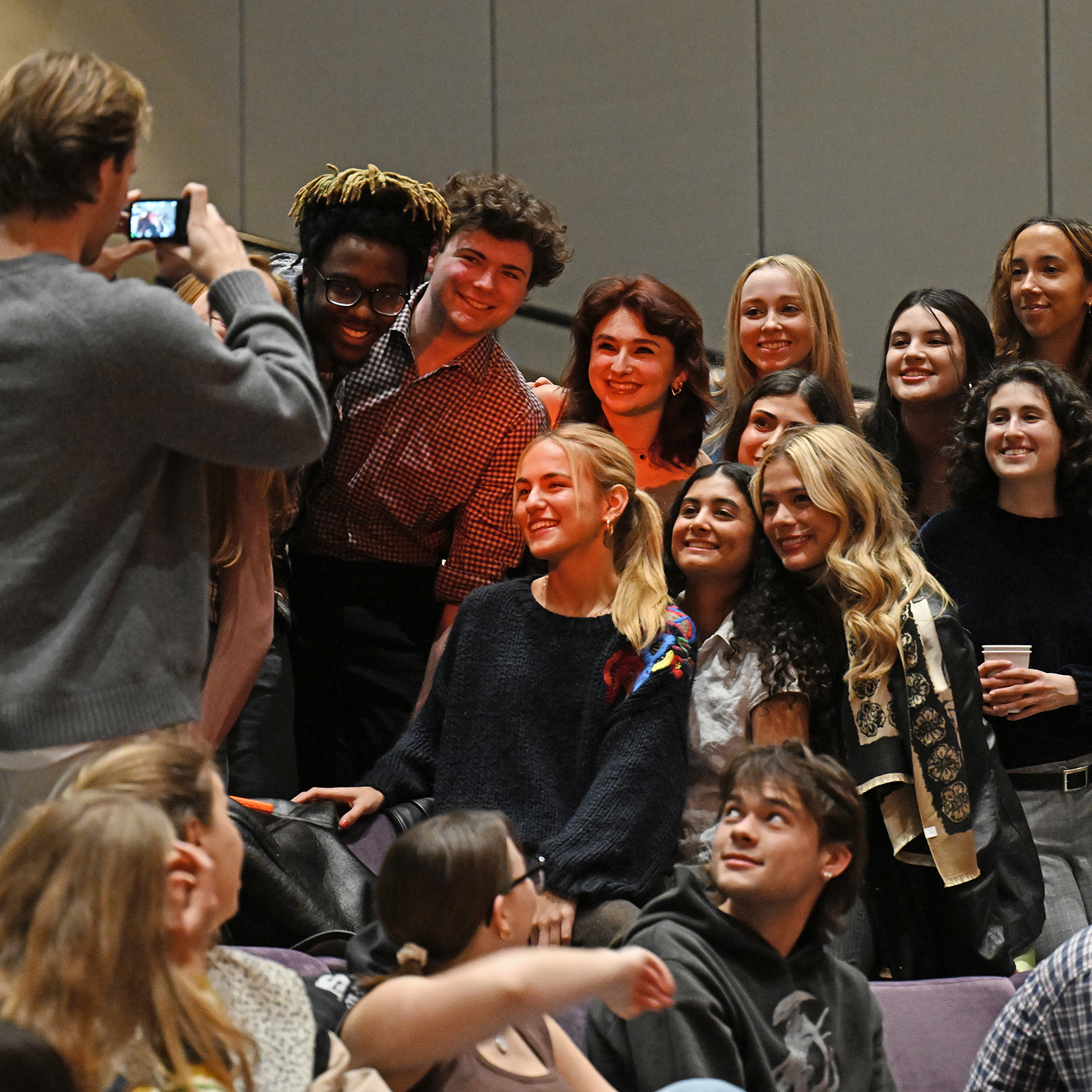
Conn students work as EMTs, firefighters during COVID-19 pandemic

Hector Salazar ’20 didn’t head home to Chicago when the COVID-19 pandemic began spreading across the globe. A volunteer firefighter and an EMT with a local fire department and ambulance service, he has important work to do.
“I signed up to serve the community and I have a responsibility to do so; we can't just stop coming into work until this is over. People depend on us,” said Salazar, who is one of at least five Connecticut College students working as EMTs on the front lines of the pandemic.
“It is during a crisis like this that it is even more important to step up to the plate and let the community know that we are here to help.”
An environmental studies and anthropology double major and Posse scholar, Salazar arranged to stay on campus. For the last several weeks, he’s been balancing his distance learning coursework while working up to 32 hours a week on the ambulance, and responding to fire calls as they come in.
“I was promoted in January to 2nd Lieutenant, and I am very proud to serve and learn in the capacity of a fire company officer,” he said. “Much like the student-athletes, I think of myself as a student-firefighter.”
Taylor Chafey ’20, a biology major and government minor, is also working and volunteering as an EMT in Waterford, Connecticut. She said the last few weeks have been unlike anything she’s ever seen.
“It’s slowly getting more and more serious and stressful as [the number of COVID-19 cases] are increasing,” she said. “It’s a different environment; the whole way we approach patients at an emergency scene has changed.”
While Chafey admits that it can be scary to think about contracting the virus herself, she said she’s taking all necessary precautions.
“When it comes down to it, I’d rather have myself out there—someone who is young and able—than someone who is older and immunocompromised,” she said.
Chafey said she would like to go to graduate school, and is considering a career as a physician assistant. Working as an EMT during a pandemic, she’s gaining hands-on experience.
“I may never see something like this again in my lifetime,” she said. “And that’s quite fine with me. But if I do, I’ll be a little more prepared for it.”
Sydney Bryan ’21 usually spends her summers at home in Wyoming, working for the emergency medical department at Grand Teton National Park, where the bulk of her work includes search and rescue calls from the backcountry. But since the park is closed to limit the spread of COVID-19, she’s staying in New London County to continue working for American Ambulance Service in Norwich, Connecticut.
“It’s wildly different work,” said Bryan, a dance major, biology minor and scholar in the Creativity Pathway.
“Here, since it’s much more urban, we do a mix of emergency calls and hospital transports. We see more major medical problems, and not as much trauma.”
While Bryan says she misses her family in Wyoming, she is glad to be using her skillset to help the community. In her free time, she’s also hand-making masks to help with the shortage of personal protective equipment (PPE).
Victoria Duszak ’21 says keeping up with the near-daily changes to PPE protocol can be a challenge.
“It’s stressful overall, but it’s the same for everyone working in healthcare right now,” she said.
A behavioral neuroscience and Slavic studies double major, physics minor and scholar in the Holleran Center for Community Action, Duszak is working as an EMT in Wolcott, Connecticut, near her hometown of Southington. She said it’s been interesting to go from responding to calls that run the gamut of emergency issues to working almost exclusively with COVID-19 or suspected COVID-19 patients.
“Now, if we get a call, it’s almost always going to be a COVID patient. Every time the radio goes off,” she said.
The experience has solidified Duszak’s interest in becoming a doctor, and she’s currently applying to medical schools.
“It’s definitely interesting living through something that we are going to talk about and look back on, but I guess that’s the job. You take whatever comes at you in medicine,” she said.
While Conn’s students are working on the front lines as EMTs and firefighters, Conn alumni are treating patients in emergency rooms, working to develop COVID-19 treatments and helping to manufacture PPE. Learn more.
